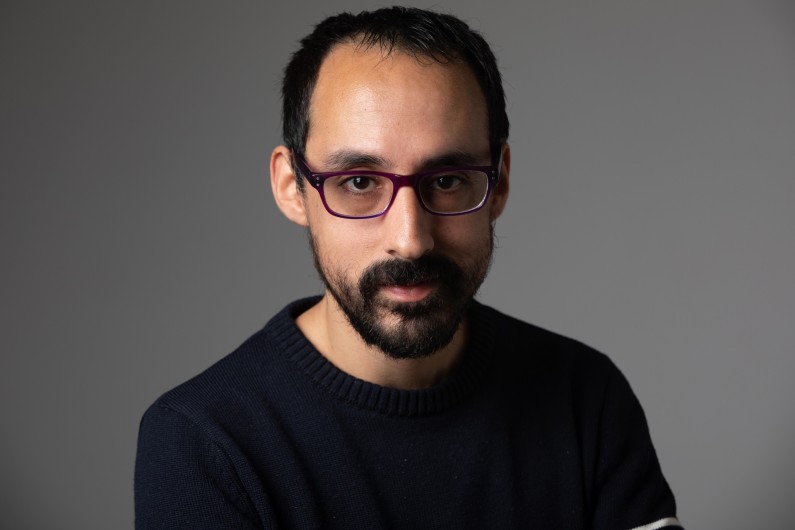Atomic scale observation and manipulation of spins in semiconductors

Semiconductors, such as silicon, are a well-known class of materials to physicists whose properties enabled the revolution in electronic technologies during the second half of the 20th century. Recently, a new family of materials has attracted attention: two-dimensional semiconductors. At École Polytechnique, Fabian Cadiz launched the study of these materials when he joined the Laboratory of Condensed Matter for Physics (PMC*) in 2017 as a researcher.
These semiconductors are called two-dimensional (2D) because of their extreme thinness: a few atoms thick. This changes the physics radically compared to three-dimensional structures. In the wake of graphene, the first 2D - but non-semiconductor - material, researchers are now able to manufacture a variety of 2D semiconductors by 'tearing' atomic-thick layers from 3D crystals. MoS2, MoTe2, WS2, etc. A layer of these materials consists of a plane of a transition metal (such as molybdenum or tungsten) surrounded by two planes of chalcogen (selenium, tellurium, sulphur, etc.) at the top and bottom. Hence their name: transition metal dichalcogenides (TMD).
It may sound unusual, but the defects in these materials are of interest to researchers like Fabian Cadiz. "For example, if an atom is missing in the layer, this defect traps electrons locally and behaves like an artificial atom," explains the physicist. These systems can, for example, emit photons one by one or be placed in a quantum superposition state. Some defects also have a non-zero spin, like some atoms or particles. Controlling the states of these spins would open up new opportunities for quantum technologies. In a three-dimensional material such as diamond, defects ("NV centers") are already being exploited as magnetic field sensors, for example. But before considering these possibilities for 2D semiconductors, the fundamental properties of these systems must first be studied.
With funding from the European Research Council for his OneSpin project, Fabian Cadiz intends to probe the behaviour of spins in these TMD materials on an individual scale. Laboratory experiments already observe large ensembles of these spins. Since a micrometer-sized region can contain several billion of them, studying them individually is more difficult. This is why an original instrument will be developed, which combines a scanning tunneling microscope (to locate and image individual defects), magnetic fields (to manipulate the spin state) and an optical system capable of exciting and measuring the spin response. " It is currently difficult to know whether the defects observed in the scanning tunneling microscope are actually responsible for the optical signal that is being detected elsewhere. The aim is to combine these two experiments into one," explains Fabian Cadiz.
By doing so, he hopes to measure how long a spin can remain in a quantum superposition state, the so-called coherence time. Theoretical calculations show that this time could reach milliseconds in two-dimensional semiconductors, which is quite long. The aim is also to understand the 'decoherence' mechanisms by which the spin interacts with its environment. Ultimately, the physicist imagines being able to engineer these defects by moving them with the tip of the scanning tunneling microscope and shaping their surroundings.
About Fabian Cadiz :
Fabian Cadiz is Assistant Professor at the Department of Physics of École Polytechnique. He carried out his Ph.D. at the Laboratory of Condensed Matter Physics, awarded with the École Polytechnique thesis prize. He then conducted a two-year post-doc at LPCNO (Paul Sabatier University/INSA/CNRS). Since 2017, he has been building up a new research activity that explores the physics of novel 2D materials. To develop this new activity, Fabian Cadiz was awarded a Young Researcher Grant from the French National Research Agency.
*PMC: a joint research unit CNRS, École Polytechnique - Institut Polytechnique de Paris
 Support l'X
Support l'X